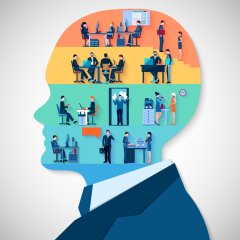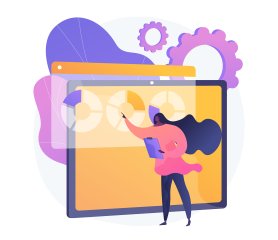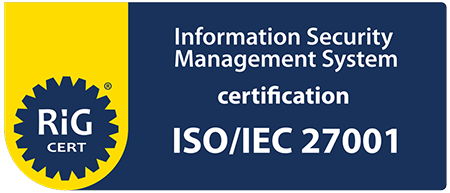The workplace is evolving faster than ever. Employees and organizations alike are facing major shifts driven by technology, artificial intelligence, and new ways of working. In 2025, upskilling has become one of the most critical priorities for businesses worldwide. To stay competitive and relevant, employees must continuously learn and adapt, and HR plays a central role in making this possible.
However, upskilling goes far beyond training programs. It’s about fostering continuous employee development, nurturing motivation, and ensuring that companies are equipped with the right skills for the future. In this blog, we’ll explore why upskilling matters more than ever, the key challenges HR teams face, and how organizations can focus on developing the skills that truly make a difference.
Why Upskilling Matters in 2025
The workplace of the future (2025) is in no way similar to the one of only a few years ago. Artificial intelligence (AI), automation, and digital transformation are reshaping jobs at every level. As new technologies redefine daily tasks, employees must continuously learn how to work with new systems, tools, and processes to stay relevant.
Upskilling has a great number of benefits for employees and organizations:
- Increased confidence
- Higher engagement and motivation
- Greater competitiveness
- Improved retention
For HR leaders, upskilling is no longer optional - it’s a strategic necessity. It’s about shaping a future-ready workforce and ensuring the organization continues to thrive in an evolving world of work.
For HR leaders, upskilling is no longer optional - it’s a strategic necessity.
Challenges HR Faces in Upskilling
Although it may sound easy, upskilling is not always that straightforward. HR teams often face common challenges.
- Skill mismatch – In some instances, employees acquire skills that are not appropriate in the business.
- Low engagement – Various training programs are tedious and not triggered to other learning styles.
- Measuring success – It is difficult to determine whether training is effective or yielding results.
- Time issues – Employees are busy and cannot handle training and work at the same time.
Such issues may turn upskilling into a burdensome process. However, they can be overcome with the correct tactics used by HR.
Effective Upskilling Strategies for 2025
Personalized Learning Programs
One of the most powerful ways to make learning effective is to make it personal. Every employee has unique strengths, interests, and career goals. With the help of technology and AI-driven learning platforms, HR teams can now create personalized learning paths tailored to individual development needs. This approach keeps employees motivated, helps them see the direct relevance of their learning, and increases long-term engagement.
Microlearning and Flexible Training
Today’s employees prefer short, focused learning sessions that fit into their busy schedules. Microlearning (delivering content in small, bite-sized modules) allows individuals to gain skills quickly and apply them immediately on the job. This flexible format ensures that learning is continuous, practical, and accessible anytime, anywhere.
Blended Learning
The most effective programs combine different methods. A learner-centered solution combines online courses, coaching, peer learning, and a real project. When employees are able to apply skills in real life, they acquire knowledge at a rapid pace.
Data-Driven Skill Tracking
In 2025, data-driven HR plays a crucial role in upskilling. By leveraging analytics, organizations can identify existing skill gaps, track progress, and predict future training needs. With the right data tools, HR can design smarter, more targeted upskilling strategies that align perfectly with business goals and employee development.
Pro Tip
One of the most powerful ways to make learning effective is to make it personal.
Case Study Example
A mid-sized technology company introduced an AI-powered upskilling program. Employees were given personalized learning paths based on their roles. In six months, 40% of the employees increased their data capabilities. The levels of engagement increased by 25%, and the rate of employee turnover also decreased by 15%. This shows how the right strategy can create real business results.
How Leadership Support Helps Upskilling
Leadership Support empowers organizations with AI-driven HR and leadership solutions that make upskilling smarter, faster, and more effective. Their innovative tools enable companies to:
- Identify skill gaps in real time using advanced data analytics.
- Create personalized learning paths tailored to each employee’s role and career goals.
- Equip leaders with digital coaching and problem-solving tools to guide teams through continuous learning.
- Monitor progress and measure impact, ensuring every development initiative delivers real business value.
By using Leadership Support's tools, HR teams can move from old-style training to smart, digital, and effective upskilling programs. It is not just about teaching skills but also about building confidence and stronger teams for the future.
Best Upskilling Strategies for HR in 2025
| Strategy | What it means | Why it works |
|---|---|---|
| Personalized Learning | Training designed for each employee’s role | Increases motivation and engagement |
| Microlearning | Small, focused lessons that fit into daily work | Easier to learn and remember |
| Blended Learning | Mix of online, coaching, and real projects | Covers all learning styles |
| Data-Driven Skill Tracking | Using analytics to see skills and gaps | Helps HR plan smarter |
Conclusion
Skills determine the future of work. Organizations that make investments in upskilling will expand more rapidly in 2025, secure their creative force, and remain competitive. It is necessary that HR goes beyond the usual training and adopts approaches that are personalized, flexible, and also data driven.
With Leadership Support, you can build impactful upskilling programs that are not only effective but also engaging for employees. Workplace instruments will determine the difference between a struggling workforce and one that thrives.
Upskilling does not only involve learning. It is about building a future-ready team. And the best time to start is now.
FAQs
What does upskilling mean, and why is it important?
Upskilling is an additional skill acquisition so that you can perform your current job more effectively. This matter is relevant since new tools and technologies are coming every day, and employees must have new knowledge to remain practical at work.
How can HR make upskilling programs successful?
HR can make upskilling work by giving training that fits each person’s role, using short and easy lessons, and mixing online learning with real practice.
What common problems do companies face with upskilling?
Many organizations struggle with limited employee time, low engagement, and a mismatch between training content and career relevance. Aligning learning programs with both business and employee goals helps overcome these obstacles.
How can a company measure the impact of upskilling?
Companies can track the success of upskilling initiatives through performance evaluations, on-the-job application of new skills, employee retention rates, and measurable outcomes such as higher productivity or reduced errors.
What is the difference between upskilling and reskilling
Upskilling enhances your current skills to perform better in your existing role. Reskilling, on the other hand, involves learning entirely new skills to transition into a different role or career path.




